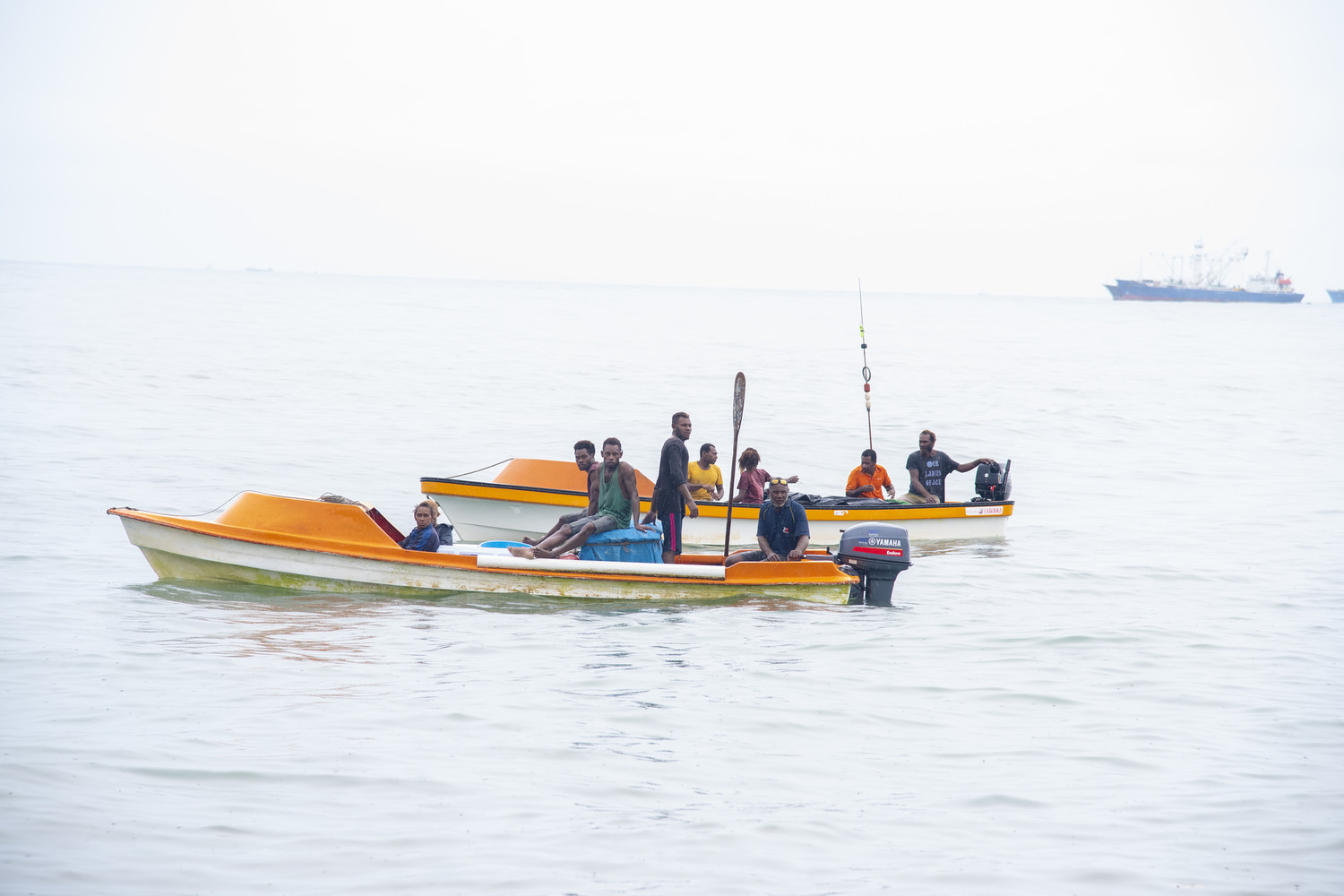In the summer of 1942, the people of the Solomon Islands
found themselves in the crosshairs of the world’s major military powers.
Japanese forces arrived in the South Pacific nation to build an airstrip on the
island of Guadalcanal and in response, Allied Forces launched a surprise
attack.
Over the next six months, tens of thousands of Japanese and Allied personnel—including Solomon Islanders—perished in the battles that raged by air, land and sea.
Today in the Solomons, the Second World War is commemorated in museums, and by the rusted weapons, military vehicles and even live ammunition that lay entombed in the jungles. The great military battles ended 75 years ago here, but spiritual battles remain intense—and one of the largest surrounds Bible translation. Despite challenges faced by local translators and expatriates, 24 of the country’s 70 languages today have a completed New Testament or full Bible, with more than a dozen additional languages in progress.
Invited by Churches
Thankfully, local translators seldom face persecution for doing their work because Christianity is the predominant religion in the Solomons. Even so, some language groups have seen their translation projects stall or fail altogether because of the lack of community co-operation, illnesses or deaths of local translators and other factors.
Early missionaries began translating and publishing Scripture portions into local languages as early as 1879. Today, some denominations use vernacular Scripture regularly (if available), while English translations are used by many others.
Wycliffe’s involvement in the Solomons began in 1978, when a national church coalition invited its key partner, SIL, to form the Solomon Islands Translation Advisory Group (SITAG). Based in the capital, Honiara, the group’s mandate is to train, advise, and mentor Solomon Islanders in Bible translation and other language-related ministries.
Today, 32 staff members, from Canada, the U.S., Germany, Switzerland, New Zealand, and Australia, are assisting Bible translation teams for eight language groups (plus various other translation ministries). Fifteen staffers work directly in translation, while others provide support through literacy efforts, administration and activities that promote the use of translated Scriptures.
Andrew Van Andel, a Canadian linguist who serves in Bible translation with his wife, Megan, says in general, the hearts of Solomon Islanders are wide open to Christianity.
“There’s a real hunger for knowing God and knowing His Word.”
Canadian Involvement
Since 2012, the Van Andels have worked with the Malango people of Guadalcanal to translate Scripture. Fellow Canadians Naaman and Lorae Brignall arrived in 2018 to support Bible translation efforts on neighbouring Makira Island.
Over the past two decades, other Canadians have served as short-term volunteers with SITAG, filling a variety of roles including construction, recording audio Scriptures and conducting language surveys to determine Bible translation needs.
Paul Unger (LEFT) and his wife Cathy were the first Canadians to participate in Bible translation here—but for years, they wondered if their efforts among the 20,000 Doku people of Guadalcanal would ever bear fruit.
Traumatized by War
The Ungers’ planned arrival in 2000 was delayed when a civil war forced the evacuation of all SITAG staff. “The tensions,” as locals called the conflict, flared up in 1998 and began to ease in 2003, although Australian and other peacekeeping forces remained in the Solomons until 2017.
When the Ungers arrived in late 2001, the Doku didn’t have their minds on Bible translation. Thousands had been displaced. Beatings, random attacks and demands for compensation were commonplace, Paul says. Most Doku people fled to the jungle for refuge.
Empty houses were destroyed, property stolen and gardens left ruined or abandoned. Food was in short supply.
“Their land was ground zero at the beginning of the conflict,” Paul says. “So they were quite naturally focused on rebuilding their lives.”
Perseverance Pays Off
Disappointed by the interruption of the Doku people’s desire for a Bible in their language, the Ungers invested their time in other foundational work such as analyzing Doku grammar and compiling a dictionary.
It wasn’t until 2009 that Bible translation began in earnest when a priest who had tried to translate Scripture on his own pleaded with more Doku believers to get involved.
Paul, a graduate of the Canada Institute of Linguistics, happily agreed to provide those who responded with training in translation principles. Within a couple of years, local translators drafted translations of Genesis, Ruth, Jonah, Matthew, Mark, John and 1 and 2 Thessalonians.
Since then, eight Doku translators have drafted the entire New Testament and about 80 per cent of the Old Testament. Next comes consultant checking, after which portions are released for use. Mark’s Gospel is furthest along, and local pastors already are preaching from it.
The Ungers are currently in Canada on “remote assignment” to provide for their children’s educational needs. Paul continues to check the translated drafts, helping to improve their accuracy, clarity and naturalness. He travels to the Solomons twice a year to work directly with the Doku team.
Pathway to Relationship
The Brignall family—the newcomers among the Canadians—have yet to settle in their language area; repeated bouts with malaria and rising tensions around land rights on Makira have delayed their plans repeatedly (see “From the Prairies to the South Pacific").
Meanwhile, both the Ungers and the Van Andels have seen slow but steady progress in the language projects they support. Recently, Andrew Van Andel had to reduce his involvement in the Malango project when he agreed to serve as director of SITAG (see “Trying to Gain Traction”).
Andrew is learning to hold lightly to plans, schedules and deadlines. His greatest desire is that SITAG will help Solomon Islanders encounter the Saviour revealed in Scripture.
“People are encountering . . . Jesus as a person,” says Andrew, “and knowing God as a father figure and the qualities He brings of love and mercy. It’s really exciting to see that they don’t perceive the Lord as a distant God, or one of many spirit forces that might help them in their walk of life.
“They understand that He’s the one true God.”
